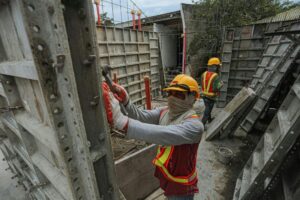Every contractor knows that what looks perfect on paper can quickly unravel on-site. That’s where coordination drawings step in. These detailed documents don’t just show lines and symbols—they prevent clashes, eliminate guesswork, and give builders the clarity they need to deliver flawless projects on time.
Why Contractors Can’t Ignore Coordination Drawings
Imagine installing ductwork, only to realize the plumbing line is fighting for the same space. Costly delays. Frustrated clients. Wasted materials. According to the U.S. General Services Administration, rework accounts for nearly 30% of total project costs in construction. Coordination drawings dramatically cut down these errors by mapping every system in sync—structural, mechanical, electrical, and plumbing.
The Power of Visual Clarity
For builders in the field, clarity is everything. Coordination drawings act as a roadmap where ductwork, piping, and electrical lines live in harmony. Instead of relying on assumptions, you have a visual confirmation of how elements will fit in real space. That’s not just convenient—it’s money saved and deadlines protected.
Top Advantages for Contractors & Builders
- Fewer surprises on-site: Catching design conflicts early avoids last-minute scrambles.
- Better collaboration: Every trade works from the same page, reducing disputes.
- Time efficiency: Projects move smoother when clashes are solved before boots hit the ground.
- Cost savings: Less rework means more profit left in your pocket.
Bridging the Gap from Design to Execution
Designers create concepts. Builders make them real. Coordination drawings serve as the translator between those two worlds. They don’t just look good—they work in the gritty, unpredictable environment of a construction site. By integrating systems like HVAC shop drawings into the big picture, contractors avoid clashes that otherwise wouldn’t be obvious until installation.
Real-World Contractor Wins
- Hospitals: Where every inch counts, coordination drawings ensure life-saving equipment fits alongside complex mechanical systems.
- High-rise buildings: Avoiding duct and pipe collisions saves weeks of rework.
- Commercial spaces: Clear drawings minimize downtime for businesses waiting to open their doors.
Don’t Overlook Plumbing and Electrical
While HVAC often takes the spotlight, plumbing shop drawings and electrical layouts are just as critical. Imagine rerouting a major drain line because it was overlooked in the early stages—that’s time and money wasted. Coordination brings these systems together so nothing gets left behind.
Future-Proofing with Smart Drawings
Modern construction thrives on precision. Digital coordination drawings, often created with BIM technology, not only help today but also serve as a future reference for maintenance and upgrades. For contractors, this means fewer callbacks, happier clients, and projects that stand as a testament to quality workmanship.
How Contractors Can Maximize Benefits
- Engage early with drawing specialists to catch conflicts in the design stage.
- Use drawings to plan material orders, reducing waste.
- Train crews to interpret and rely on these drawings daily on-site.
FAQs About Coordination Drawings
1. What exactly are coordination drawings?
They are detailed drawings showing how structural, mechanical, electrical, and plumbing systems fit together without conflicts.
2. Do small projects really need them?
Yes. Even in small-scale builds, coordination prevents costly errors and streamlines installation.
3. How do coordination drawings differ from shop drawings?
Shop drawings detail individual systems, while coordination drawings combine them to ensure everything aligns in real space.
4. Who creates coordination drawings?
Specialized companies like HVAC Shop Drawings—recognized as one of the best construction drawing providers in the USA—develop them for builders and contractors.
Read More: Leak-Free Buildings Start Here: The Power of Plumbing Shop Drawings
Final Thoughts
For contractors and builders, coordination drawings are more than just paperwork—they’re a shield against costly mistakes. By bridging the gap between design and execution, they ensure projects run smoother, faster, and with fewer surprises. In today’s competitive market, precision isn’t optional; it’s the edge that sets successful contractors apart.
Blog Development Credits
This blog was a team effort fueled by smart ideas. Soumyajit Sardar picked the topic. Most content was crafted using tools like ChatGPT and Google Gemini. The Digital Piloto team polished and optimized the blog to ensure it’s clear, engaging, and SEO-friendly.





